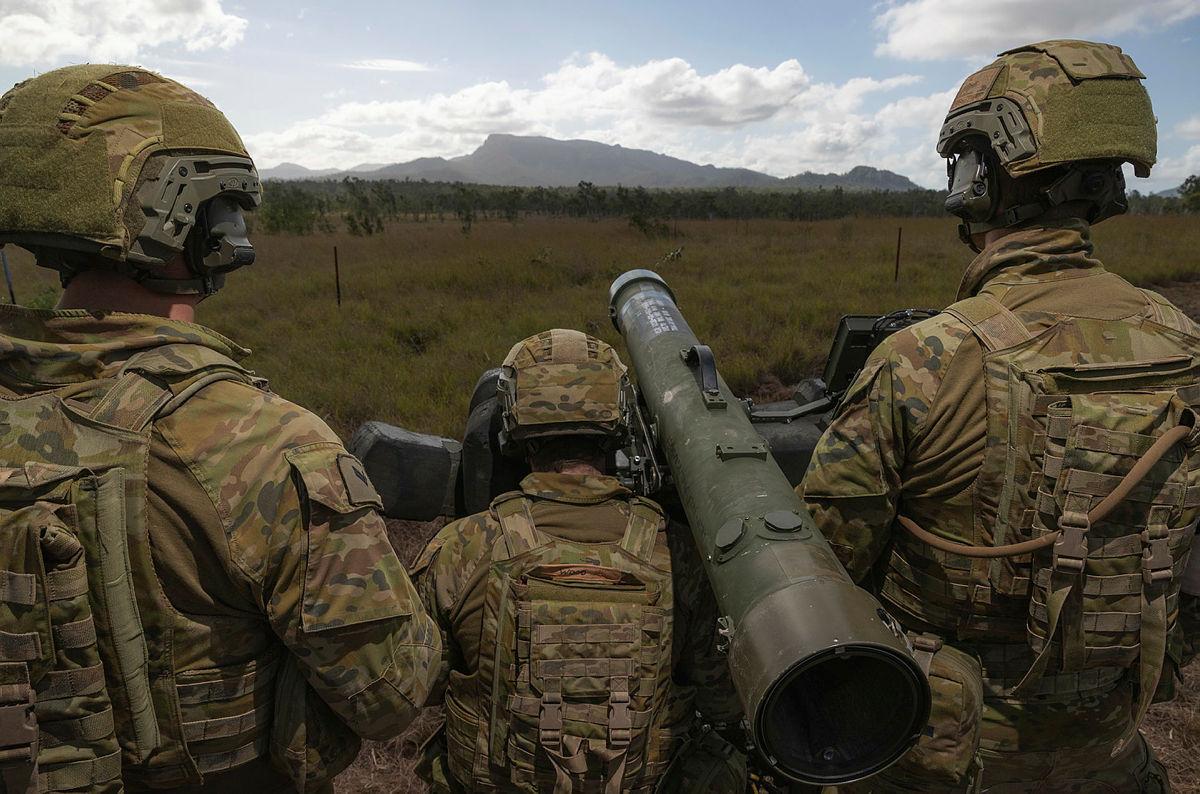
Opposition leader Anthony Albanese began his Lowy Institute speech last Thursday referring to Prime Minister John Curtin’s 1941 declaration that Australia ‘looked to America’ in our moment of deepest strategic danger.
In 2022 we have no choice but to do the same because our developing khaki election could well produce Australia’s next wartime prime minister.
Before World War II, Australian governments watched global security deteriorate as authoritarian governments rearmed and attacked their neighbours. Our responses were woefully inadequate, relying on diplomatic rhetoric about how countries should behave. Australia’s defence preparations were too little too late and utterly inadequate compared to the threat. Curtin’s statement was a cry of desperation, not an exercise of policy choice.
Does this ring true today? Consider the positives. For all the criticism flung at it, the Australian Defence Force is as militarily capable as it ever has been. Australia has a deeply connected defence relationship with the US. Our relationship with Japan in cooperation with the US is developing as a powerful military partnership.
Albanese says he wants to ‘deepen’, ‘elevate’ and ‘enhance’ relations with partners. The door is already open in South Korea, India, Singapore and other countries to do more.
It’s a pity that Albanese didn’t find space in his speech to mention Britain, other than in a passing reference to climate change. Some ideological shibboleths die hard. AUKUS creates an opportunity to design a modern security relationship with Britain.
We also have absolute clarity about the principal risk to our security. It’s the People’s Republic of China, a wealthier, more orderly, more powerful version of Russia, with an undisguised intent to dominate the region.
On defence planning and spending, the penny may finally be dropping with the government and the opposition that the need is to quickly find ways to strengthen the ADF.
The government’s announcement to develop a new naval base for nuclear-powered submarines on the east coast is an essential step. Plans to grow the ADF by a further 18,500 are entirely sensible, as are the identified priority areas: submariners, long-range missileers, cyber warriors and the rest.
But this growth is spread out over two decades. The people we plan to run our ‘composite space control program’ (whatever that is) in 2040 are currently in nappies watching Bananas in Pyjamas.
In our national security community, it’s thought that the mid-2020s will be the period of maximum risk. If Xi Jinping is going to attack Taiwan, that’s the time when the People’s Liberation Army may be best placed relative to its opponents for a move against Taipei.
Beyond the tragic consequences this would have for Taiwan, the greater risk is that a conflict could rapidly widen and escalate potentially to a nuclear exchange. Europe is living with this reality right now. It will be astonishing if the war remains inside Ukraine’s borders.
Even if there is only a small chance that this assessment of China is right, the bipartisan defence policy plans of Albanese and Prime Minister Scott Morrison must be completely rethought.
One can have too much bipartisanship. On defence, it produces a type of timid complacency.
Defence is not fighting the last war; it’s positioning to fight an imaginary war in 2045. The risk is that we have 24 to 36 months to get ready for a conflict, or to better position to prevent one.
What to do? First, if we don’t want to be drawn into a conflict over Taiwan, we should be helping the Taiwanese to defend themselves. Out of a fear of provoking Russia, the West failed to arm Ukraine. Let’s not repeat that mistake. We must rethink our one-China policy, seeking to make Taiwan a very prickly target.
Second, we need an independent review of the ADF’s capabilities. Doing a new white paper would be pointless because, if Defence drives the process, we will get a revalidation of its efforts over the past 20 years.
The key aim for a review of military capabilities is to determine what can be done to build a stronger deterrence capability inside three or four years.
The only way to do that is to latch on to current production lines in the US, Britain and Europe. The current bipartisan emphasis on building sovereign defence industry capability is a dangerous myth. Far better to become part of an AUKUS and Quad shared industrial base.
Third, Defence is doing a lot of essential work, but it can’t meet the strategic challenge alone and the organisation’s worst instinct is to push aside external help.
Delivering on the AUKUS plans for nuclear submarines, hypersonic weapons and more will succeed or fail based on what industry can produce. My understanding is that Defence is resisting any discussion with industry on delivering AUKUS.
The prime minister should convene an industry–AUKUS partnership. We need to harness the private sector of the AUKUS and Quad countries towards delivering new high-technology defence capabilities.
For its size, Defence delivers significant military capability to government, but it is not designed to handle the scale and speed of current threats. We urgently need to tap more lateral and radical thinking about ways to strengthen our deterrence capabilities.